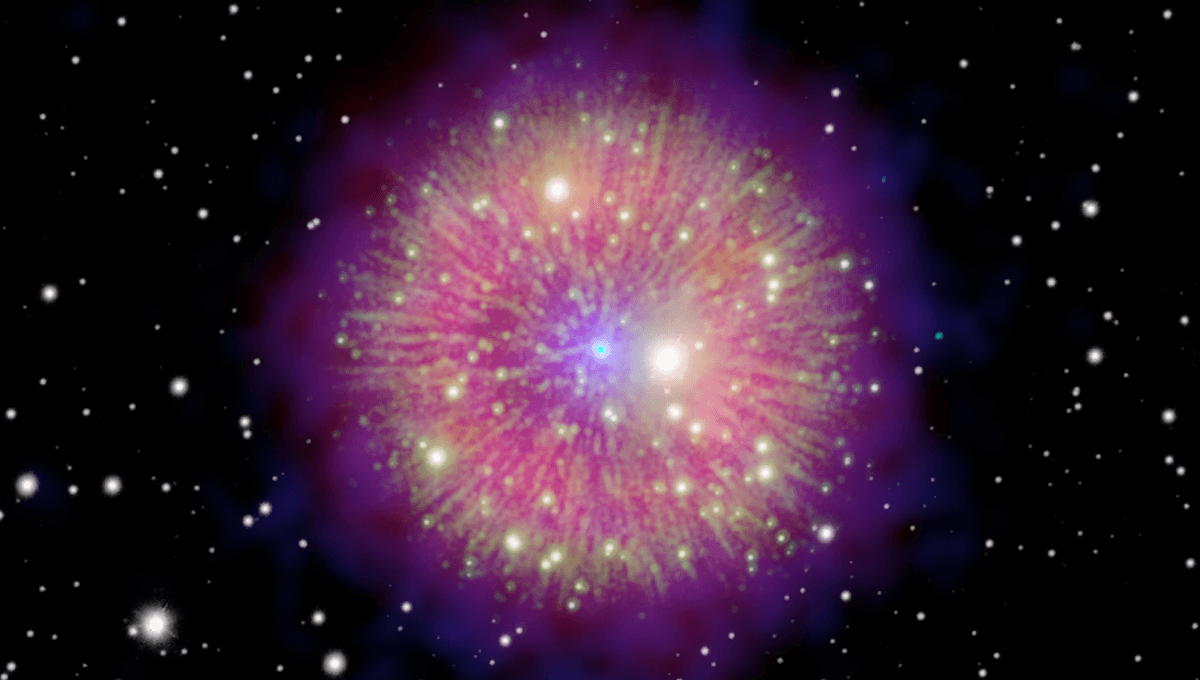
A study looking at ancient texts may have found evidence of a galactic supernova in a poem praising Saladin, the first sultan of Egypt and Syria, written between December 1181 and May 1182 CE.
In October 1604, astronomer and mathematician Johannes Kepler spotted a new star in the sky and began tracking it. Over the course of several weeks, the star remained visible in the daytime and outshone Jupiter at night, before disappearing once more.
Kepler and other astronomers believed the event to be the birth of a star, but we now know that he was witnessing a Type Ia Supernova.
“Astronomers today classify supernovas according to their characteristics, and SN 1604 belongs to the group known as Type Ia supernovas, typically found in binary star systems composed of a white dwarf and a red giant,” NASA explains.
“The gravitation force of the white dwarf draws in material from its larger less dense companion until it reaches a critical mass, around 1.4 times the mass of our Sun. At that point, a runaway thermonuclear chain reaction begins, causing a release of tremendous amounts of energy, including light, that we see as a sudden brightening of an otherwise dim star.”
Regular supernova explosions – as the core of a massive star collapses – occur in the Milky Way once every 50 years or so, while Type Ia supernova happen around once every 500 years. Kepler’s supernova is the most recent supernova to be visible in our galaxy to the naked eye from Earth. But it certainly wasn’t the first.
Looking back through history, ancient Chinese astronomers documented a mysterious “guest star” that appeared in 185 CE, confirmed by NASA 1,827 years later. In the new work, researchers found reference to a potential supernova (SN) in a poem Ibn Sanā’ al-Mulk from Cairo, Egypt, performed for Saladin.
“I see how everything on the surface of the Earth has increased in number thanks to your justice; now even the stars [anjum] in the sky have increased in number,” a translation of the poem, by the authors of the paper, reads. “The Dyed Hand [Cassiopeia] used to be unadorned, but when time became adorned because of you, it put on a (signet) ring.”
The poem, whilst not known for being a precise method of communication, actually provided the team with a lot of information on the potential supernova, including its magnitude, as the poem referenced it outshining the known star Arcturus.
“The Arabic poem presented here yields valuable information on the transient of AD 1181/82, in particular on its nature (a stellar object, Arabic: najm), dating (Dec 1181 to May 1182), celestial position (in Cassiopeia), and brighter than the brightest star in Cas (𝛼 Cas with V=2.25 mag) – and maybe also like Arcturus,” the team explain in their paper. “Also, the very fact that it was indeed seen by laymen (the poet) and discussed intensively among astronomers and astrologers in Egypt indicates a relatively strong brightness and/or lengthy visibility period.”
Looking at its position in the sky (please try to include co-ordinates in your poems – I’m looking at you, Keats), the team determined that it was likely Supernova of 1181 (SN 1181), which appeared in the constellation Cassiopeia and was visible for a full 185 days.
Looking at the poet’s description of the star – “you rose until it was impossible to rise any further” – the team believes that they can date the poem to after the supernova’s maximum brightness, placing it between December 1181 and May 1182.
“Since Arcturus is the sixth brightest star visible in Egypt, the new star at a similar brightness would also have been among the brightest stars (‘astronomers and astrologers… stammering’),” the team adds. “When the new star became invisible, it was very likely around 5-6 mag, the limit for naked-eye detection.”
This is similar to Chinese and Japanese reports of its brightness. The team expects other texts from the time will reference the supernova, perhaps from Cairo, or elsewhere in Arabia and Persia, perhaps containing further information on an ancient, rare, and bright supernova in our own galaxy.
The study is published in Astronomical Notes.
Source Link: Poem From 1181 CE Cairo Appears To Reference A Rare Galactic Supernova